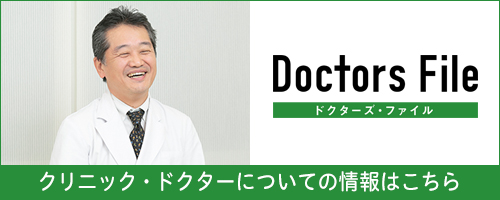https://uchiideclinic.jp/blog/1471
Cancer and Other Oncology Treatments
~"Treatment with very few side effects" based on pathological findings
Let me conclude first... that leukotriene receptor antagonists, drugs for bronchial asthma and hay fever, may be able to treat many cancers and other malignant tumors.
For now, there is still no evidence that it is better than existing standard treatments... so existing treatments such as surgery, anticancer drugs, and radiation therapy should be considered first.
Here are the details (it may be a bit long and difficult to follow).
First of all
Cancer currently afflicts so many people that one out of every two people is affected by it, and it is also a disease that, if left untreated, will surely lead to death.
According to the Ministry of Health, Labor and Welfare, 1,369,000 people died of cancer in 2018, and according to data from the National Cancer Center, 373,334 people died of cancer in 2017, meaning that roughly one in three Japanese die of some form of cancer.
https://www.mhlw.go.jp/toukei/saikin/hw/jinkou/suikei18/dl/2018suikei.pdf
https://ganjoho.jp/reg_stat/statistics/stat/summary.html
And, as one would expect, being diagnosed with cancer is a terrifying disease that will surely lead to death. Also, treatment requires major surgery, anticancer drugs, and radiotherapy. Even if the treatment is effective, it is physically and mentally very painful, and in addition, the treatment is expensive and financially burdensome. There is an impression that if you have cancer, you will not be able to work and your family will be inconvenienced.
When cancer is found during a medical checkup, for example, we usually go about our daily lives as usual. It is hard to believe that we have such a horrible disease. Then we wonder, "Do I really have cancer? If I could at least maintain my current condition without progressing, I wouldn't have to undergo such painful treatments.
If there was a drug that, when taken, could suppress the progression of cancer and produce therapeutic effects without major side effects... cancer would no longer be a frightening disease.
It may sound like a dream, but in fact, it is no exaggeration to say that we are very close to that point.
Discoveries and Inventions Leading to New Treatment Methods
This treatment method is derived from the results of pathological search and discovery of tissues of various benign and malignant tumors. This discovery was the first of its kind in the world, and the prevention and treatment method based on it has been applied for an international patent by the discoverer, Dr. Masao Sugamata.
The following is an easy-to-understand summary.
Common pathological findings (microscopic images) were found in tissues of benign and malignant tumors (Table 1)
This common pathology was found only in tumor tissue (tumor cells and surrounding cells), not in normal tissue
This common pathology is essential for the survival and growth of tumors and can be suppressed as a common weakness with certain drugs, making it possible to suppress the progression of various types of tumors (benign and malignant) and treat them.
In addition, this therapy has almost no side effects like the three major cancer therapies (surgery, radiation, and anticancer drugs) that are currently available.
To get a little technical, this common pathology is a reaction between a substance called leukotriene and the leukotriene receptors that receive it, and this reaction is responsible for the progression of tumor tissue. By inhibiting the function of this leukotriene, preventive and therapeutic effects can be achieved.
LT: leukotriene LT-R: leukotriene receptor
LTR-A: leukotriene receptor antagonist
Future Prospects - Cancer Treatment with Less Side Effects
We do not deny existing treatments. We believe that standard therapies are important because some malignant tumors can be treated effectively with existing standard therapies. On the other hand, however, it is also true that there are some patients who suffer from pain because the treatment does not produce the desired effect. When cancer is detected, depending on the results of the diagnosis, it may be determined that the existing treatment methods are not curative. We believe that leukotriene receptor antagonists may be able to treat such cases by inhibiting tumor progression.
This is supported by the fact that statistics from the Taiwanese Ministry of Health and Welfare show that bronchial asthma patients who were taking leukotriene receptor antagonists had a time-dependent decrease in cancer incidence, and that patients taking higher doses had a higher rate of decrease in cancer incidence. We believe that the use of this drug is certain to control tumors (see the epidemiologic statistics in this paper). (Tumors listed as particularly effective in this epidemiologic statistical article are breast, lung, colon, and liver cancers.)
Leukotriene receptor antagonists were originally developed as a treatment for bronchial asthma, and are now also widely and commonly used as a treatment for allergic rhinitis (hay fever), with insurance coverage. It is not used for asthma attacks, but for daily use to reduce the likelihood of attacks. In the treatment of hay fever, it is mainly used to improve symptoms of nasal congestion.
Treatment with leukotriene receptor antagonists has the tremendous advantage of not having the strong side effects of existing standard treatments, since it is a method of regressing tumors by suppressing inflammation and moderately mobilizing cells to process abnormal cells. It is also thought to be effective in relieving pain caused by malignant tumors because it works on nerves that have grown into the tumor tissue.
In addition, since leukotriene receptor antagonists can basically be taken at home, it is not necessary to change the rhythm of one's life for treatment. Therefore, treatment is unlikely to interfere with quality of life.
It should be added, however, that this treatment is not yet approved by insurance. Although it has been established that it is safe as a treatment for bronchial asthma and allergic rhinitis, it is different from common over-the-counter drugs (such as cold and pain medications available at drug stores) and requires medical supervision when taking it.
We would also like to add that we do not believe that the current standard of care should be replaced by the methods that have been proven to be effective based on medical statistics.
In the future, we hope to help those who are suffering from cancer treatment.
The results of this research discovered by Dr. Masao Sugamata, the main researcher, were the first in the world, and he holds intellectual property rights (see a copy of the patent certificate) for this treatment method worldwide.
Please do not contact us by phone regarding this topic.
Please use the official line chat to contact us.
https://lin.ee/ATDYTHm
References
Sugamata M, Thara T, Sugamata M, Mano Y, Takeda K, et al. (2017) Mast Cell Infiltration and Leukotriene Receptor Expression in Colorectal Adenoma: Preventive application of malignant transformation based on common pathological findings. Canc Therapy & Oncol Int J 7: 555718. http://dx.doi.org/10.19080/ctoij.2017.07.555718
Sugamata M, Thara T, Sugamata M (2015) Mast cell infiltration and leukotriene receptor expression in various tumors: possible clinical application of J Canc Therapy 6: 606-612. http://dx.doi.org/10.4236/jct.2015.67066
Sugamata M (2018) Possibility of the Strategic Treatment for Various Tumors using the Leukotriene Receptor Antagonist: Discussion Based on the Common Pathologic Findings that Mast Cells and Leukotrienes are Involved in the Development and Proliferation of Tumors Chemo Open Access 7: 259. Available at: http://dx.doi.org/10.4172/2167-7700.1000259
Tsai, M., Wu, P., Sheu, C. et al. Cysteinyl Leukotriene Receptor Antagonists Decrease Cancer Risk in Asthma Patients. Sci Rep 6, 23979 (2016). https://doi.org/10.1038/srep23979
Table 1
Table 1 List of tumors with confirmed leukotriene receptor
Malignant tumor
Number of cases
Epithelial tumor
Pharyngeal carcinoma (squamous cell carcinoma)
Highly differentiated
N=2
poorly differentiated
N=2
Esophageal cancer (squamous cell carcinoma)
Moderately differentiated
N=2
Gastric cancer
poorly differentiated
N=5
Colorectal cancer (adenocarcinoma)
Highly differentiated
N=5
Moderately differentiated
N=3
Poorly differentiated
N=3
Liver cancer (hepatoblastoma)
N=3
(Hepatocellular carcinoma)
N=4
Cholangiocarcinoma (adenocarcinoma)
Highly differentiated
N=3
poorly differentiated
N=3
Renal cell carcinoma
N=5
Pancreatic cancer (adenocarcinoma)
Well-differentiated
N=5
Moderately differentiated
N=3
Poorly differentiated
N=3
Breast cancer (intraductal; non-invasive)
N=5
(Scirrhous carcinoma; invasive)
N=3
Cervical cancer (squamous cell carcinoma)
N=5
Uterine body cancer (adenocarcinoma)
N=5
Ovarian cancer (high-grade serous adenocarcinoma)
N=5
Prostate cancer (adenocarcinoma)
N=5
Thyroid cancer (papillary carcinoma)
N=3
Non-epithelial tumor
Rhabdomyosarcoma
N=2
Leiomyosarcoma
N=2
Hemangiosarcoma
N=2
Total 25 types
Total number of cases 93
Benign Tumors
Number of cases
Epithelial tumor
Neurolemmoma
N=2
Pituitary adenoma
N=4
Follicular adenoma (thyroid)
N=3
Colorectal adenoma (colorectal polyp)
Highly atypical
N=15
Mild atypia
N=15
Non-epithelial tumor
Uterine myoma
N=15
Total 6 types
Total number of cases 54
046-843-4886
If you have any women's problems
Please consult us about anything!
In a soothing place with a view of the sea
Relaxing treatment in a relaxing place with a view of the sea.
046-843-4886
Translated with www.DeepL.com/Translator (free version)














0 コメント:
コメントを投稿